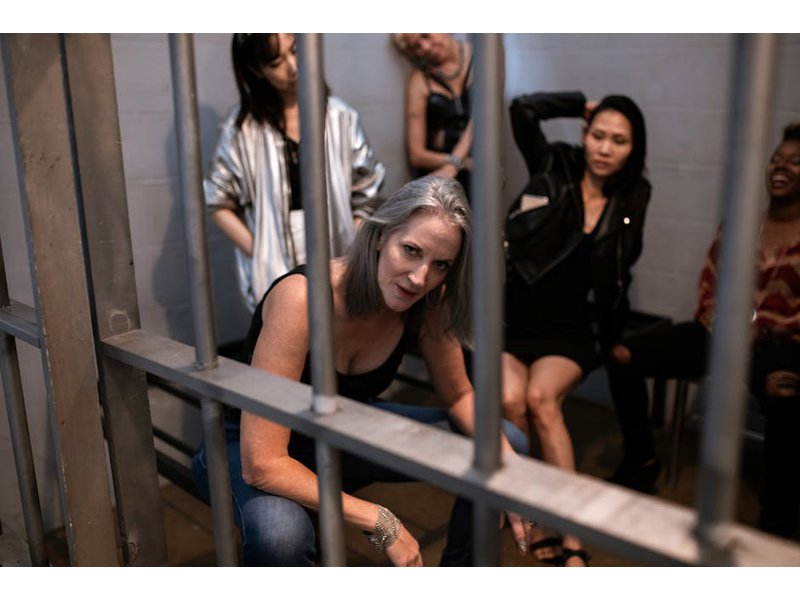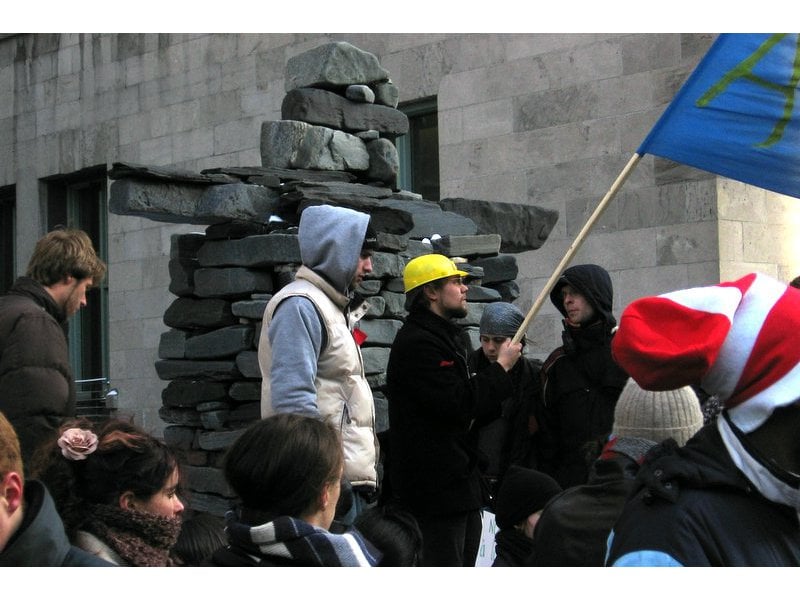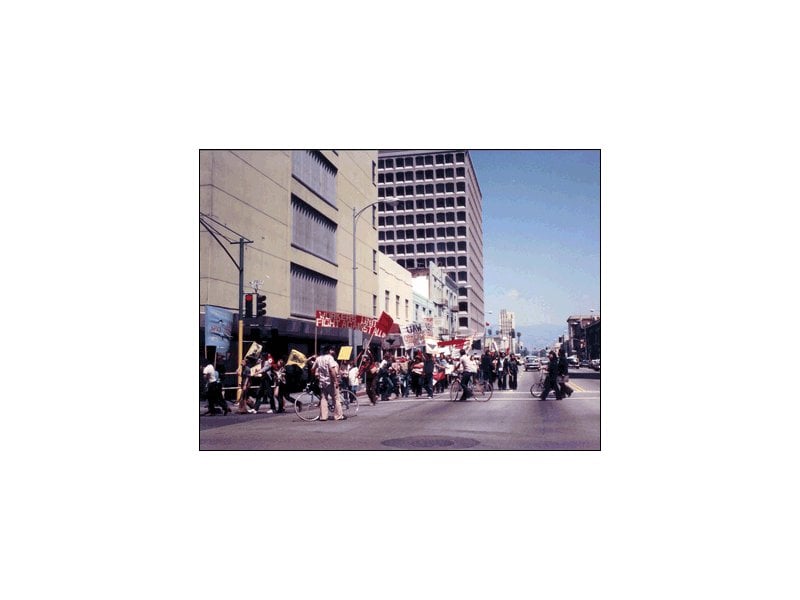102 prisoners strike

"Prisoners have also at times refused to do work required of them by prison officials; the refusal may have various motives: an objection to being incarcerated at all, an effort to improve specific conditions in the prison, or other motives. During World War II a number of strikes by conscientious objectors took place in U.S. prisons. One of these, by nineteen prisoners, began at the Federal Correctional Institution at Danbury, Connecticut, on August 11, 1943, in protest against the official policy of racial segregation at meals. After 133 days of restriction to their cells, with only limited exercise, a monotonous diet, and restrictions on visits, the prisoners noted the gradual introduction of a cafeteria system, which the strikers expected would permanently eliminate the policy of segregation.37"...
Potentially problematic matches
High scoring campaigns using this method
Historical cases from the Nonviolent Action Database that used this method
Baltimore students demonstrate to integrate Northwood Theater, 1963
On Friday, February 15, 1963, the student-led Civic Interest Group (CIG) began a demonstration against Northwood Theater in Baltimore, Maryland. The ultimately successful demonstration took place in the context of a longer history of protests against...
Irish republican prisoners campaign for special status, 1976—1981
Hunger strikes have a long history in Ireland dating back to the medieval periods when Cealachan, a method of gaining justice for some perceived offense through starvation, was codified in the civil code called the Senchus Mor. This starvation tactic...
U.S. National Woman's Party campaigns for suffrage, 1914-1920
When Alice Paul emerged into the somewhat stagnant scene of the National American Woman’s Suffrage Association’s (NAWSA) campaign for the right to vote in 1912, the energy and momentum of the movement surged. Having just come from Britain where women...
Norillag prisoners strike for better conditions (Norilsk uprising), 1953
The Norillag was a gulag labor camp, located in Norilsk, Krasnoyarsk Krai, Russia, a town in the Taimyr Peninsula on the coast of the Arctic Ocean, close to the mouth of the Enisei River. Inmates of the Norillag worked 12-hour days, in temperatures a...
New Mexico prisoners strike for increased rights, United States, 1971
In August 1967, New Mexico governor David Cargo appointed J.E. Baker a reform-minded and rehabilitation-focused administrator, as the Penitentiary of New Mexico's warden. Through his time as warden, Baker implemented a number of changes in the prison...
Vorkuta prisoners strike for improved conditions, Russia, 1953
Prison camps were set up in Russia by the Bolsheviks soon after the October 1917 revolution and the scale of imprisonment expanded enormously beginning in the late 1920s, with most prisoners forced to labor, especially in mining, logging, and constru...
Fort Leavenworth Prison strike for better prison conditions and reduced sentences, 1919
On 6 April 1917 the United States of America entered World War I. The American army was about the sixth the size of Britain’s, and President Woodrow Wilson sought to increase the army’s numbers to one million through volunteer conscription. After onl...
Prisoners occupy Attica Correctional Facility for just treatment, 1971
Editor's Note: We recognize that the inclusion of this case in a database of nonviolent action may be controversial because of the campaigner violence at certain points during the campaign. However, we have concluded that the campaigner violence was ...
Georgia, USA, inmates strike for prison reform ("Lockdown for Liberty"), 2010
After months of organizing (primarily using contraband cell phones purchased from prison guards), thousands of Georgia prisoners launched a strike on 9 December 2010 when prisoners assigned to the earliest breakfast shift refused to leave their cells...
Indian revolutionaries protest prison injustices at Central Jail Mianwali, 1929-1931
A series of revolutionary movements aimed at freeing India from British colonial rule started in the early 1900s. In an effort to overthrow the British Empire and to end colonial rule, Indian revolutionaries and organizations undertook several tactic...
Low scoring campaigns using this method
Historical cases from the Nonviolent Action Database that used this method
British prison inmates strike to oppose new system of control, Full Sutton prison, 1995
At the start of November in the year 1995, a new system was instated in the correctional institution of Full Sutton, located near York in New Yorkshire, United Kingdom. Over the few months before November changes to the system had begun to surface. T...
California inmates hunger strike to improve prison conditions, 2013
In 2011, over 12,000 prisoners of California’s corrections system participated in a hunger strike to protest their inhumane conditions of confinement. The protesters had five core demands: 1) Eliminate group punishments and administrative abuse, 2) A...
Georgia, USA, inmates strike for prison reform ("Lockdown for Liberty"), 2010
After months of organizing (primarily using contraband cell phones purchased from prison guards), thousands of Georgia prisoners launched a strike on 9 December 2010 when prisoners assigned to the earliest breakfast shift refused to leave their cells...
Indian revolutionaries protest prison injustices at Central Jail Mianwali, 1929-1931
A series of revolutionary movements aimed at freeing India from British colonial rule started in the early 1900s. In an effort to overthrow the British Empire and to end colonial rule, Indian revolutionaries and organizations undertook several tactic...
Prisoners occupy Attica Correctional Facility for just treatment, 1971
Editor's Note: We recognize that the inclusion of this case in a database of nonviolent action may be controversial because of the campaigner violence at certain points during the campaign. However, we have concluded that the campaigner violence was ...





